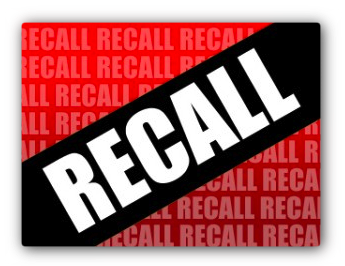1-800-865-9137
Product Recalls - FDA Recall

Does your team handle FDA product recalls properly?
Handling product recalls properly should be one of the most important components of your company's emergency planning. Product recalls have the potential to inflict very serious damage on your company's reputation, brand name, customer relationships, and sales and market position.
It's a good idea for any company to have a procedure for product recalls at all levels, so each department needs to have input on handling such a crisis.
The following tips are based on recommendations from the U.S. Food and Drug Administration (FDA) and the experiences of other companies.
If your company determines that a product you've distributed is potentially hazardous to the public (or animals), and/or violates the Federal Food, Drug, and Cosmetic Act, you're urged to notify your local FDA District Recall Coordinator as soon as you decide that an FDA recall is needed — even before you notify the media or your customers. The FDA website can help you locate a product recall coordinator in your area.
The FDA recommends you submit some key information to the product recall coordinator.
- Product information — This includes obvious details such as the product name (include both the brand name and generic name, if applicable); the model, catalogue, product order number(s), and other identifying numbers; and a description of the product. You should also include additional identifying information such as product codes (e.g., production identification numbers) as well as the names of both the recalling company and the manufacturer (not necessarily the same).
- Reason for recall — You'll need to explain in detail how the product in question is defective, and how it possibly violates the Federal Food, Drug, and Cosmetic Act.
- Assessment of health hazard — While a decision to recall a product doesn't depend solely on the health risk involved, you should be prepared to provide an assessment of this factor.
- Product volume — The FDA also requests information about the volume or quantity of the product being recalled, including the total quantity produced; production date(s); the quantity distributed; date(s) of distribution; and an estimate of the amount still on the market (retail stores, etc.). They'd also like to know how the recalled product is being quarantined.
- Distribution pattern — The FDA would also like to know the number of customers you sell directly to, and what kind of distributors they are (wholesalers, repackers, manufacturers, etc.).
- Your recall strategy — You'll need to let the FDA know what kind of strategy you have for handling the recall, including how far in the distribution chain you're extending the recall (e.g., wholesale level, retail level, pharmacies, medication users, etc.) and your rationale. They'll also like to know your method of notification (e.g., postal mail, phone, faxes, e-mails, etc.). If you have a website, it's a good idea to post your FDA recall notification there.
The most important task is to communicate the product recall to the public. This means trying to make use of every available means of communication during the recall — Internet, postal mail system, e-mail, TV, print media--to disseminate recall information to the general public. We’ll cover some considerations recommended by the FDA on how best to notify the public about the product recall in the next blog post.
Call us today! 1-800-865-9137



